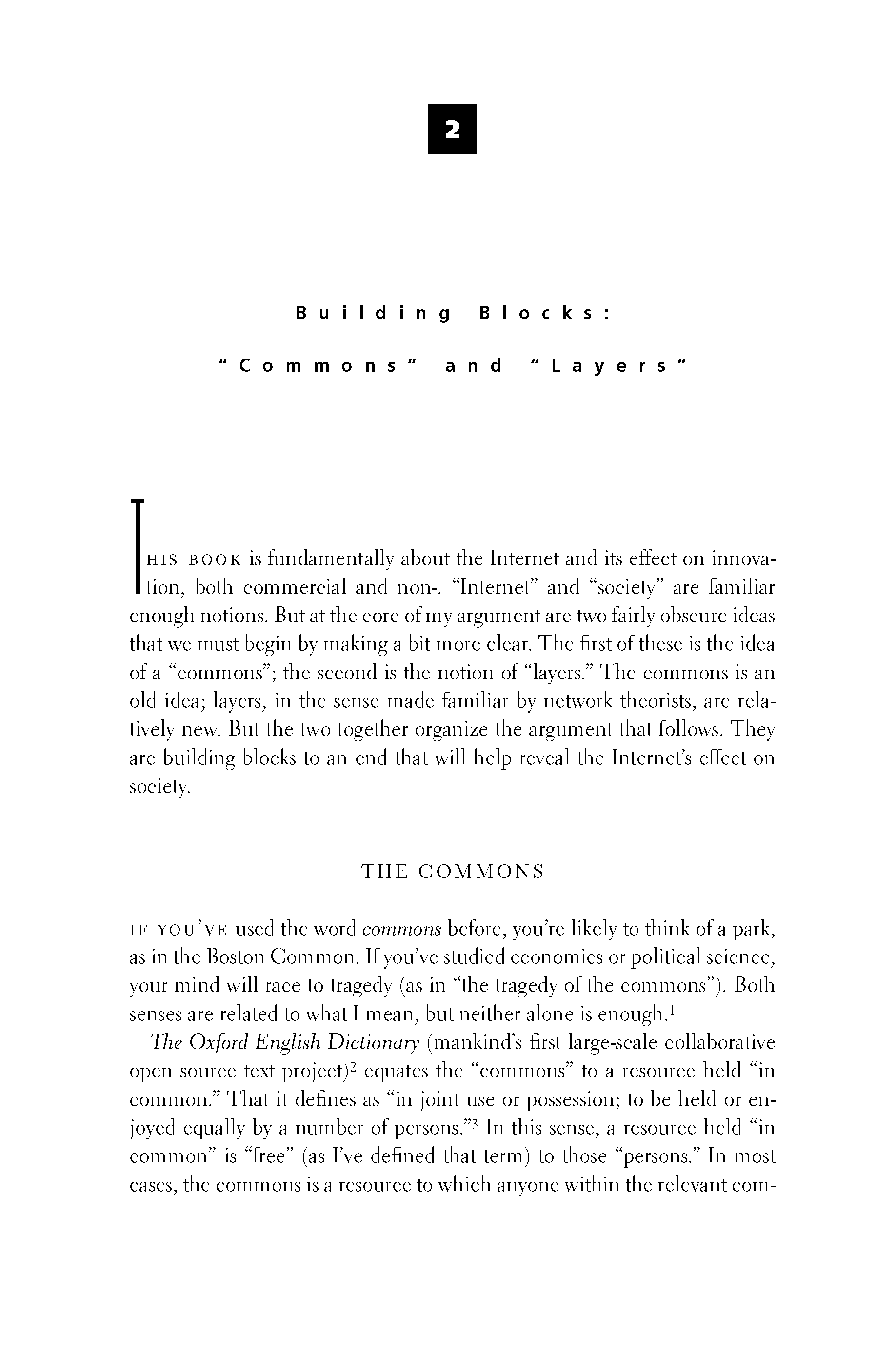 p018 _
-chap- _
toc-1 _
p019w _
toc-2 _
+chap+ _
p020
p018 _
-chap- _
toc-1 _
p019w _
toc-2 _
+chap+ _
p020
This book is fundamentally about the Internet and its effect on innova-
tion, both commercial and non-. "Internet" and "society" are familiar
enough notions. But at the core of my argument are two fairly obscure ideas
that we must begin by making a bit more clear. The first of these is the idea
of a "commons"; the second is the notion of "layers." The commons is an
old idea; layers, in the sense made familiar by network theorists, are rela-
tively new. But the two together organize the argument that follows. They
are building blocks to an end that will help reveal the Internet's effect on
society.
/tab\/tab\THE COMMONS/tab\/tab\
If you've used the word _commons_ before, you're likely to think of a park,
as in the Boston Common. If you've studied economics or political science,
your mind will race to tragedy (as in "the tragedy of the commons"). Both
senses are related to what I mean, but neither alone is enough.[2-1]
_The_Oxford_English_Dictionary_ (mankind's first large-scale collaborative
open source text project)[2-2] equates the "commons" to a resource held "in
common." That it defines as "in joint use or possession; to be held or en-
joyed equally by a number of persons."[2-3] In this sense, a resource held "in
common" is "free" (as I've defined that term) to those "persons." In most
cases, the commons is a resource to which anyone within the relevant com-
[[19]]
p018 _
-chap- _
toc-1 _
p019w _
toc-2 _
+chap+ _
p020